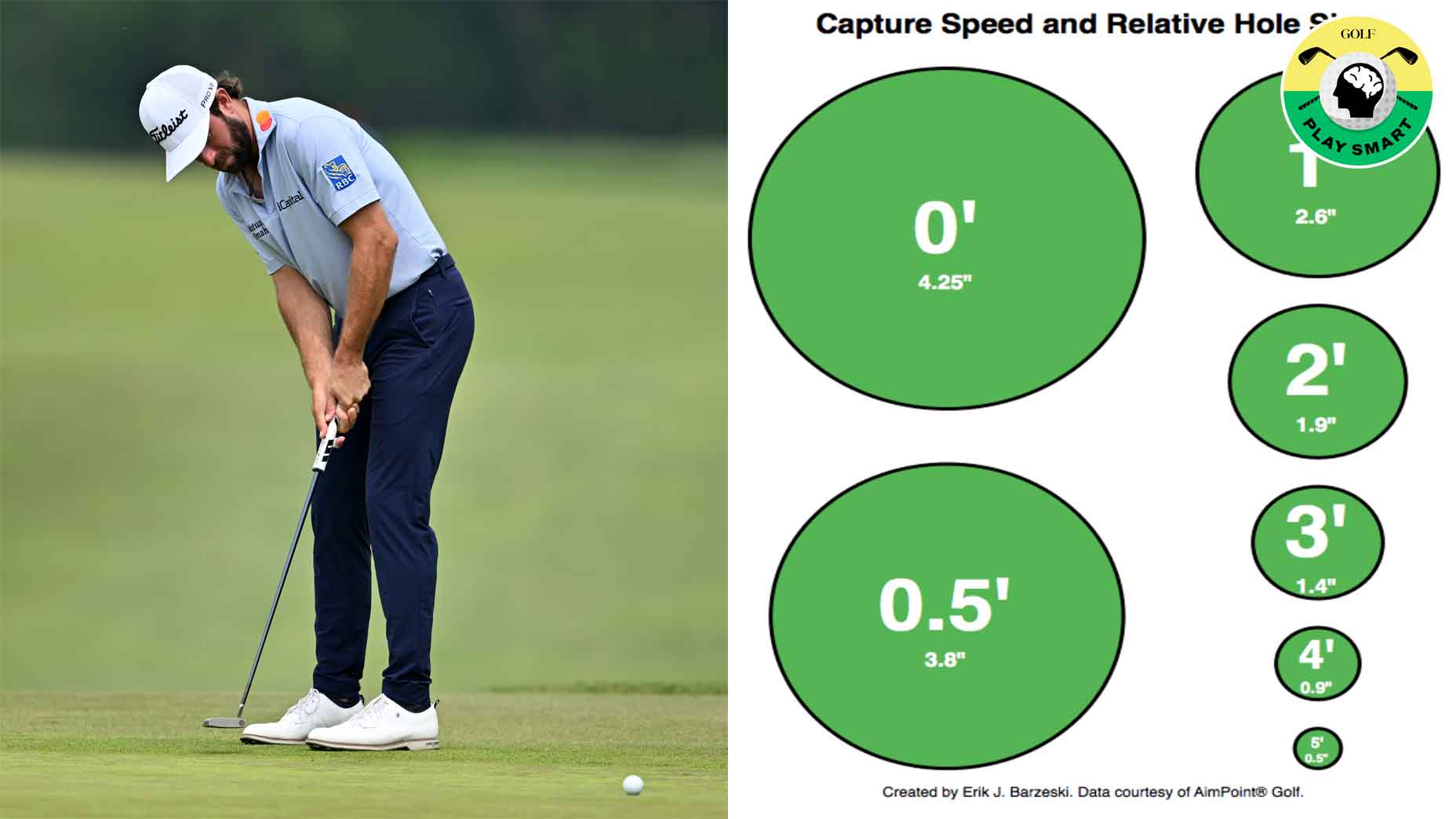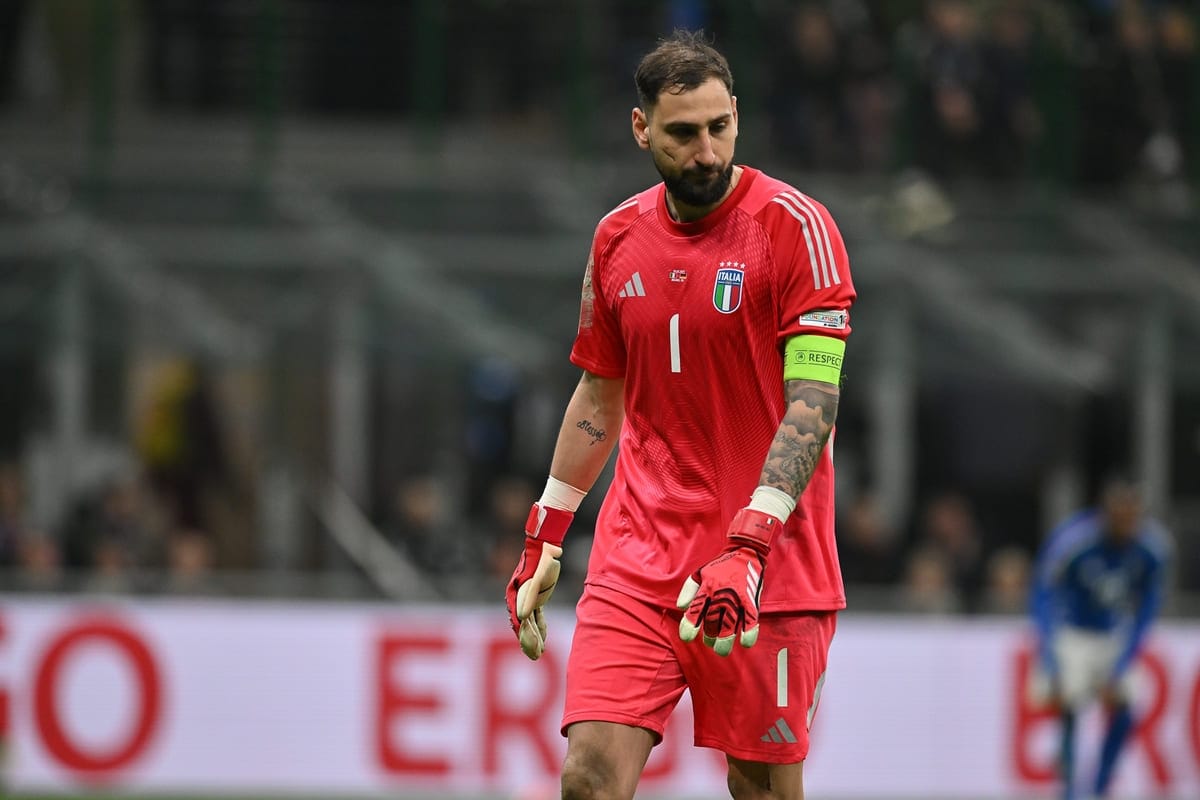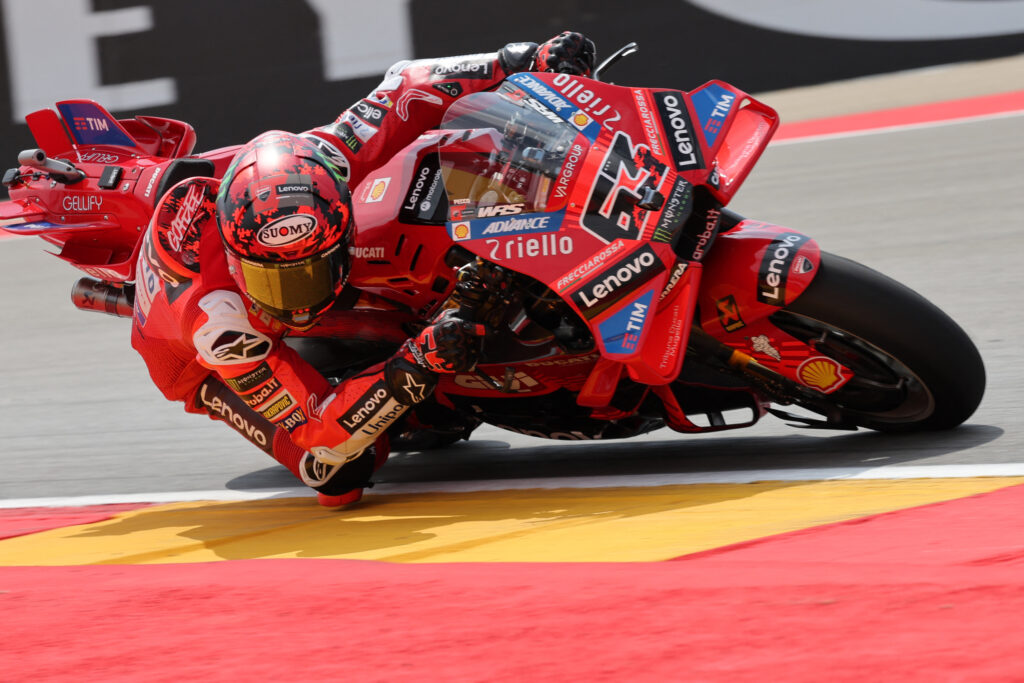What speed should you be playing your putts?
Getty Images / Erik J. Barzeski
Welcome to Play Smart, a regular GOLF.com game-improvement column that will help you become a smarter, better golfer.
Holing putts is a product of two key factors: line and speed. If one or the other is off by just a touch, your ball won’t drop in the cup. To make things even trickier, you’ve got to match your line with the speed. It’s no wonder the shortest shots can give even the pros fits.
There are lots of different philosophies on how hard you should hit your putts. Some think that every putt should be hit so they end up a foot past the hole, while others like to minimize their front-to-back dispersion to eliminate three-putts. Wherever you fall on that spectrum, one thing is certain: speed is a crucial factor when it comes to putting.
One thing to consider when choosing your speed is the effective hole size. When you hit a putt with lots of speed, the effective size of the hole actually decreases, as evidenced by putts that lip out. With those frustrating putts, the truth is that the ball would’ve dropped if it were moving a touch slower when it reached the hole.
While browsing social media recently, I came across a fascinating chart that perfectly illustrates this point. It comes from the book Lowest Score Wins, which was co-authored by instructor Erik J. Barzeski, and gives you a great visual on how the effective hole size shrinks the harder you hit putts.
How the effective hole size shrinks
If you’re someone who likes to “take the break out of the putt” and hit the ball with plenty of speed, I’ve got bad news for you: when you do this, you’re effectively shrinking the size of the hole.
Barzeski’s chart illustrates this phenomenon perfectly. As you can see, a putt that is hit with speed so that the ball dies right at the hole will drop in across the entire 4.25-inch diameter of the cup. However, as the speed of the putt increases, the relative hole size shrinks.
A putt that is hit to roll 1 foot past the cup shrinks the effective hole size to 2.6 inches, while when hit to roll 2 feet past it shrinks the effective hole size to 1.9 inches. And for a putt that “takes the break out of the putt” (5 feet past), the effective hole size shrinks to just half an inch.
So, next time you are tempted to give a putt a little extra juice to eliminate some of the break, stop and think about this chart. If you do, you’ll likely end up making more putts.














